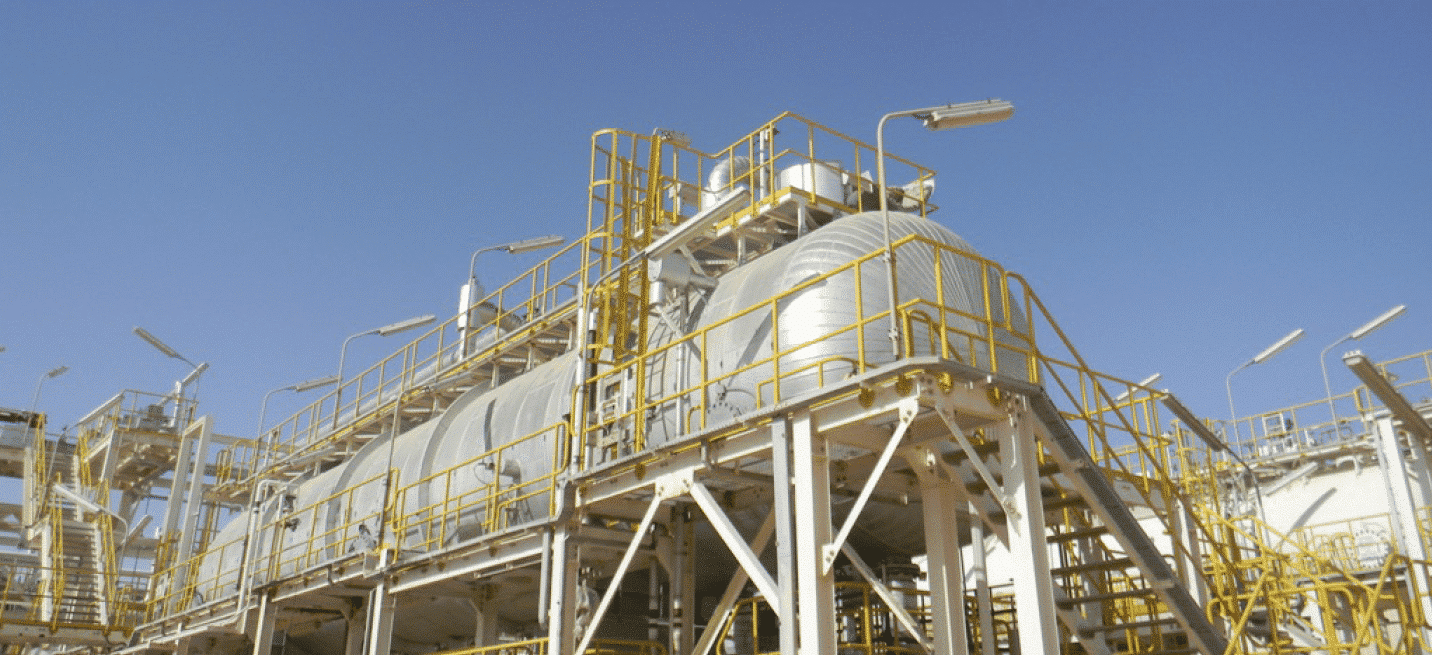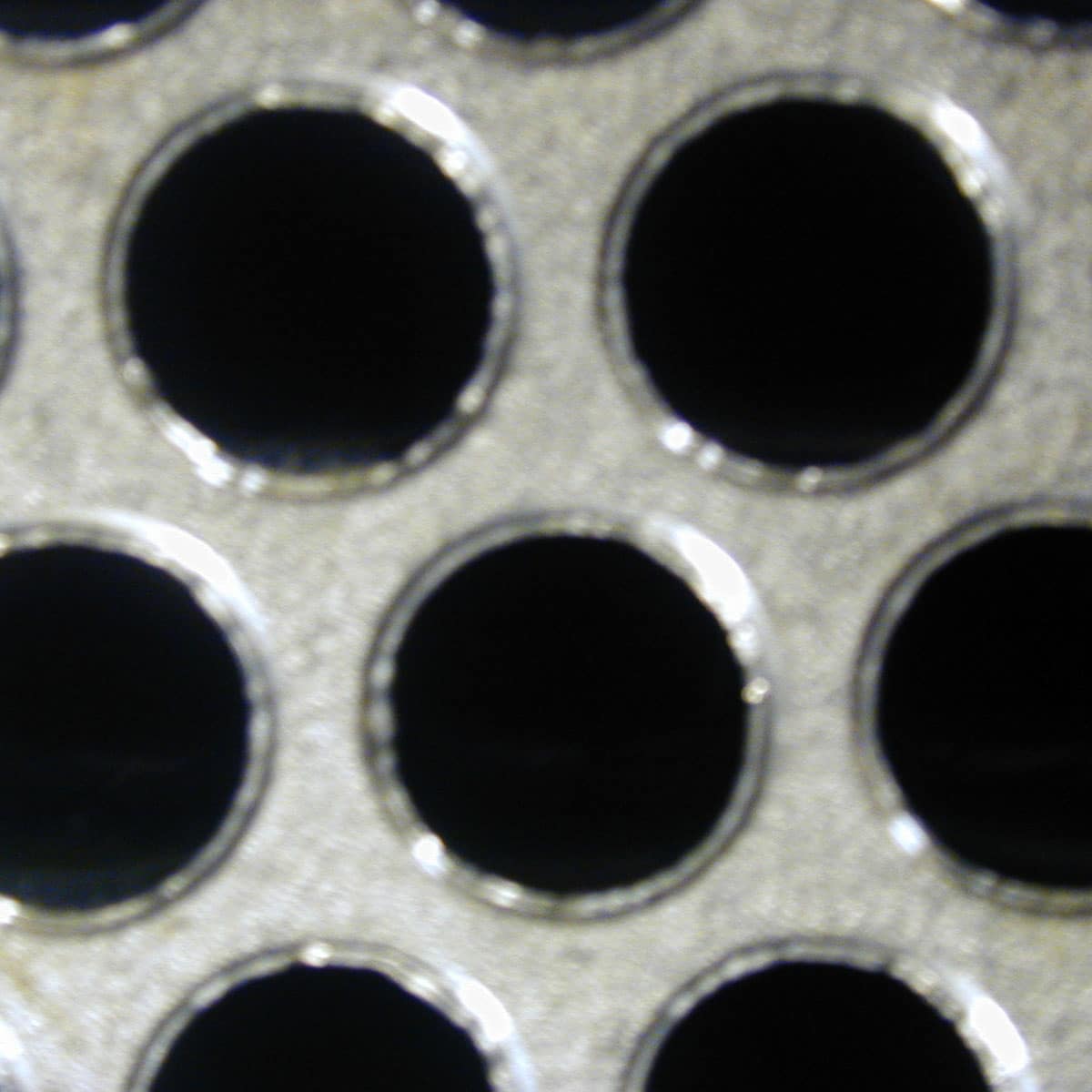Offshore Maintenance Services
Advanced solutions for offshore vessel corrosion and heat exchanger fouling.
Asset integrity and process efficiency are mission-critical in offshore operations. Internal corrosion in pressure vessels and severe fouling in heat exchangers can reduce throughput, extend critical paths, and extend turnaround schedules. Traditional fixes can be slow, complex, and often impractical offshore.
Integrated Global Services (IGS) delivers highly engineered, on-site solutions that extend asset life and restore performance more quickly and predictably than legacy methods.
Where We Help Offshore
- FPSOs/FSOs and fixed platforms
- Separators, treaters, columns, and pressure vessels
- Shell-and-tube exchangers (including twisted tubes)
- Turnarounds, unplanned outages
Reliability Challenges for Offshore Operations

Challenge 1. Pressure Vessel Corrosion (Internal)
Corrosive species in the process stream degrade vessels, separators, and columns via:
- Sour Service Corrosion (H₂S + water)
Uniform loss, pitting, risk of sulfide stress cracking (SSC).
- Sweet Corrosion (CO₂ + water)
Carbonic acid drives localized pitting/mesa corrosion, rapidly thinning walls.
- High-Temperature Sulfidic Corrosion
Sulfur compounds react with steel; rate depends on temperature and alloy.
Why Traditional Repairs Fail Offshore
Conventional repair options each carry significant drawbacks. Full vessel replacement is not only prohibitively expensive but often logistically impossible offshore. Weld Metal Overlay (WMO) adds further complexity, as its high heat input creates a heat-affected zone that risks distortion and stress cracking while adding weeks to the critical path. Organic coatings provide only temporary protection and are prone to blistering, chemical attack, and disbondment under high pressure, high temperature, or cycling conditions, often accelerating under-film corrosion rather than preventing it.
Solution 1. HVTS® Cladding – Permanent Internal Corrosion Barrier
High Velocity Thermal Spray (HVTS) applies a high-nobility corrosion-resistant alloy (CRA) to internal vessel surfaces, creating a dense, impermeable barrier mechanically bonded to the substrate.
HVTS® Benefits At-a-Glance
- Installed in days, not weeks
Rapid in-situ deployment (robotic/manual) keeps HVTS off the critical path.
- No HAZ, no distortion
Solid-state process with negligible heat input preserves parent metal properties. No PWHT, fewer emergent repairs, more predictable restarts.
- Proven barrier performance
Dense microstructure and high bond strength isolate carbon steel from sour/sweet service.
Cost – Avoid CapEx. Control OpEx.
By extending the life of existing vessels, HVTS allows operators to defer costly replacement or weld overlay programs. Its performance is stable and reliable, with no blistering or disbondment cycles typical of organic coatings, meaning fewer unplanned repair scopes. Tailored CRA alloys such as Inconel® 625 or Hastelloy® can be matched to the specific chemistry, temperature, and pressure of the service environment, ensuring performance by design, not by chance.
Safety – Lower heat, lower risk.
HVTS minimizes hot-work exposure thanks to its solid-state application, which simplifies offshore permitting and reduces overall safety risks. Fast, targeted execution, whether robotic or manual, also reduces confined-space time, limiting personnel exposure during operations
Comparison Table of Corrosion Barrier Technologies (HVTS & WOL)
| Feature | High-Velocity Thermal Spray (HVTS) | Weld Overlay (WOL) |
|---|---|---|
| Corrosion Resistance | Yes | Yes |
| Erosion Resistance | Yes | Medium (depending on alloy) |
| Typical Alloys Utilized | Modified 625, C-276, Monel | 316, 625, 622, 52, Monel, Hastelloy |
| Bond Type | Micro-mechanical interlocking (MMI) | Metallurgical/chemical |
| Typical Thickness | ~20 mils | 5–7 mm (≈200–275 mils) |
| PWHT Requirement | No | Sometimes required |
| Dilution into Base Metal | No | Yes |
| Heat-Affected Zone (HAZ) | None | Yes |
| Stress/Distortion | None | Possible on thin components |
| Application Speed | Medium-Fast | Slow |
| Repairability | Localized, simple | Complex (grind and reweld) |
| Thermal Resistance | >932°F / >500°C | >932°F / >500°C |
| Curing Requirements | None | None |

Challenge 2. Heat Exchanger Fouling (Shell & Tube)
Fouling reduces the heat-transfer coefficient, resulting in lower throughput, higher ΔP, and increased energy consumption.
Common severe foulants:
- Coke/Carbonaceous Deposits
Hard, insulating layers in high-temp hydrocarbon service.
- Polymer & Asphaltenes
Sticky, tenacious deposits that reduce flow and block heat transfer.
- Process-Side Scale
Inorganic salts (e.g., CaCO₃, FeS) forming hard, brittle layers.
The Limits of Conventional Cleaning
Traditional cleaning methods often fall short offshore. Hydro-jetting is limited to line-of-sight access, making it ineffective on hard or blocked tubes, and it can even risk eroding internals. Chemical cleaning introduces its own challenges, with material-compatibility concerns, complex offshore logistics, and inconsistent deposit removal that leaves performance issues unresolved.
Solution 2. TubeTech™ – Guaranteed Heat Exchanger De-Fouling
The IGS TubeTech division delivers over 90% fouling removal (guaranteed), restoring thermal efficiency and flow capacity to near-design levels, even against coke and polymers.
TubeTech™ Benefits At-a-Glance
-
Maximize Uptime & Performance
Robotic 360° cleaning removes over 90% of fouling, restoring thermal efficiency and flow capacity to near-design levels. That means optimal throughput without over-firing and reduced pressure drop. -
Lower Costs & Energy Use
Clean surfaces mean lower duty to hit targets, fewer mid-run cleans, and extended run lengths, cutting both fuel consumption and outage frequency. -
Reliable, Verified Results
Post-clean inspection reports (video and tube maps) provide proof before startup, eliminating guesswork, de-risking commissioning, and avoiding “open-and-find” surprises. -
Access & Execution
Specialized cleaning heads navigate each tube for consistent 360° coverage, removing coke, polymers, and hard scale where hydro-jetting falls short. -
Rapid Global Response
With strategic bases and dedicated offshore teams, we mobilize quickly to minimize downtime and keep your assets online.
Frequently Asked Questions
How is HVTS different from a coating?
HVTS is a CRA cladding – a dense, mechanically bonded barrier with negligible heat input, not an organic film prone to blistering or disbondment.
Will TubeTech work on coke and polymer fouling?
Yes. The robotic/mechanical approach targets hard, tenacious deposits and fully blocked tubes that hydro-jetting often can’t touch.
How quickly can you mobilize offshore?
We maintain global rapid-response capability. Scope and access define exact timelines; our model is built to minimize downtime for exchangers or vessels.
Contact our technical team about your corrosion and fouling challenges and discover how IGS can reduce your next turnaround while enhancing long-term reliability.

Talk to a Technical Specialist
IGS is here to provide information, answer questions and create an effective solution for your needs.


